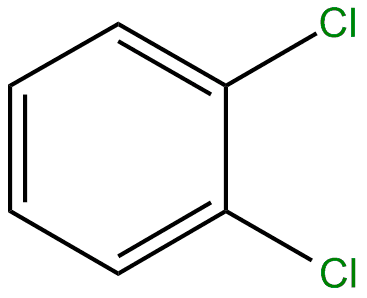Density 1.3 g/cm³ Molar mass 147.01 g/mol | Formula C6H4Cl2 | |
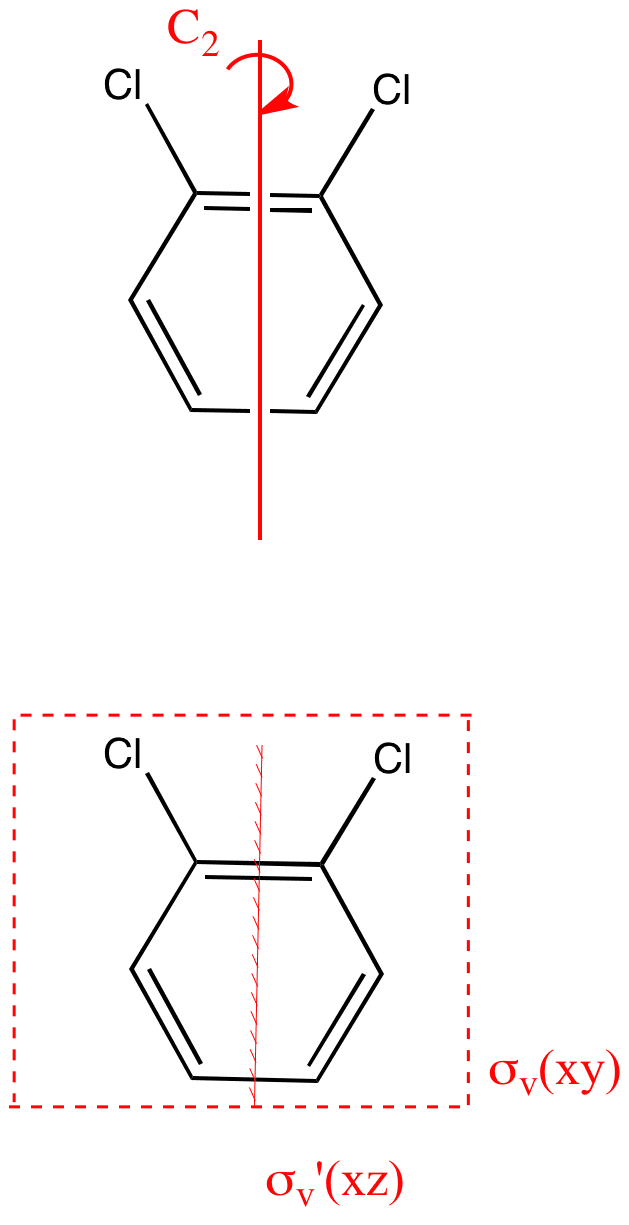 | ||
1,2-Dichlorobenzene, or orthodichlorobenzene (ODCB), is an organic compound with the formula C6H4Cl2. This colourless liquid is poorly soluble in water but miscible with most organic solvents. It is a derivative of benzene, consisting of two adjacent chlorine centers.
Contents
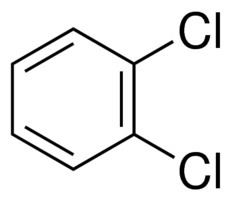
Production and uses
1,2-Dichlorobenzene is obtained as a side-product of the production of chlorobenzene:
C6H
5Cl + Cl
2 → C
6H
4Cl
2 + HCl
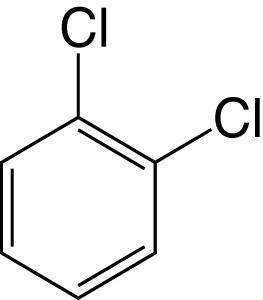
The reaction also affords the 1,4- and small amounts of the 1,3-isomer. The 1,4- isomer is preferred over the 1,2- isomer due to steric hindrance. The 1,3- isomer is uncommon because it is a meta- compound, while chlorine, like all halogens, is a ortho/para- directors in terms of electrophilic aromatic substitution.
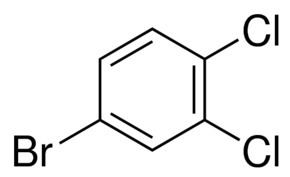
It is mainly used as a precursor to 1,2-dichloro-4-nitrobenzene, an intermediate in the synthesis of agrochemicals. In terms of niche applications, 1,2-dichlorobenzene is a versatile, high-boiling solvent. It is a preferred solvent for dissolving and working with fullerenes. It is an insecticide for termites and locust borers, historically used by the United States Forest Service to combat widespread bark beetle outbreaks.
1,2-Dichlorobenzene is also used in softening and removing carbon-based contamination on metal surfaces.
Safety
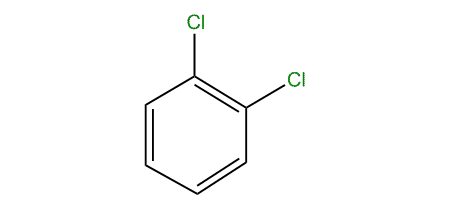
Data from human exposure to 1,2-dichlorobenzene shows that concentrations of 100 ppm have been reported to cause sporadic irritation of the eyes and respiratory tract. The Occupational Safety and Health Administration and the National Institute for Occupational Safety and Health have set occupational exposure limits at a ceiling of 50 ppm, over an eight-hour workday.
